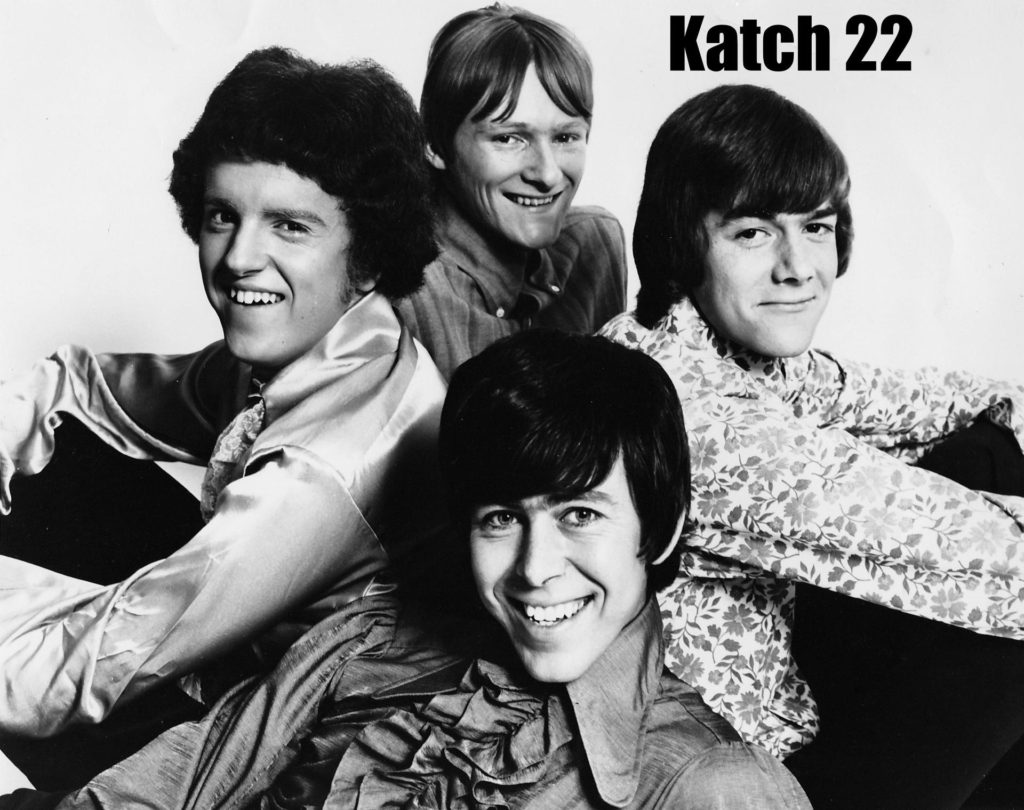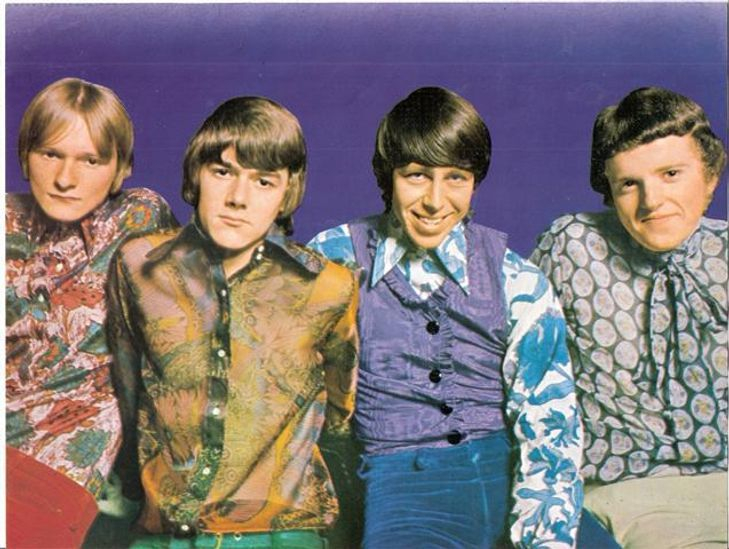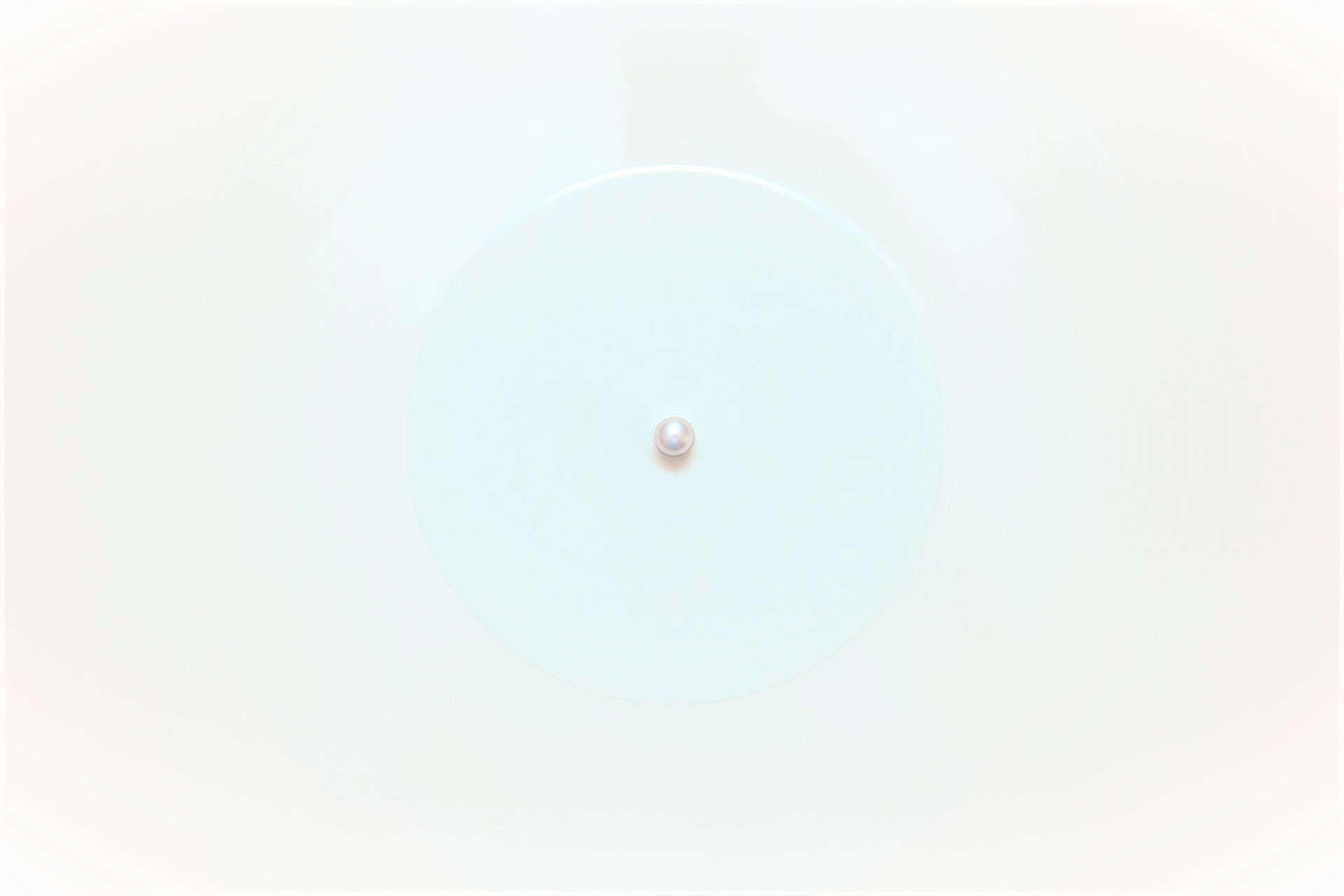Mike Eastman of Katch 22 and Paintbox talks to Jason Barnard about his memories of 60s music scene and working with Vanda and Young.
Where are you originally from and how did you get into playing music?
I am from Wallington in South London, I formed a ‘skiffle group’ in 1962, and then later on a ‘beat group’ in 1964, with some school friends.
Can you tell me about the formation of Katch 22?
‘Katch 22’ was formed in 1966 from the 1964 band ‘The Midnite Blues’, the line up was Mike Eastman (Rhythm Guitar), Paul Bonner (Drums), Martin Godbold (Lead Guitar), and his brother Robert Godbold (Bass Guitar).
Your debut single was the superb ‘Major Catastrophe’. How did you get signed?
We were ‘spotted’ by a Fontana Records talent scout and A and R man, the Hawaiian ‘Tokenam Aw’ whilst playing in the London Clubs. ‘Major Catastrophe’ was written by Aw, and so was chosen to be our first record.
Katch 22 played a lot of shows in that period including as support, what are your memories?
We loved playing with the top chart bands of the time on the same bill as support. Most of the time we were allowed to use their amplifiers, as ours were only low power. We also got to know many legendary musicians from that time.
The ‘Makin’ My Mind Up’ single had more of a harmony pop sound than your debut. Was that more representative of your sound?
Our stage act consisted of many cover versions of songs by The Byrds, Beach Boys, Four Seasons, The Association, The Turtles etc., so ‘harmonies’ were a big part of our repertoire. “Makin’ My Mind Up’ was written by Dalton and Montgomery from ‘the Turtles’, and a deal was made with their publishing company for us to release it.
How much promotion from Fontana did you get?
Not as much as some of the ‘bigger names’, but they did print some really good quality colour posters to promote our records, and they helped in getting us our first BBC Radio One audition. We also became the band of choice as session singers for some of their other artists.
‘Its Soft Rock and Allsorts, Its KATCH 22’ album was released on SAGA whereas your third single ‘The Worlds Getting Smaller’ was still on Fontana. What led you to the switch?
It was always our dream to have an album out, especially as we had started to write our own material, but the criteria at Fontana was, ‘have a hit chart record’ or two, then they would put up the money to do an album. Each record was on a ‘song for song’ contract, so we were not ‘tied up’ long term, Tokenam Aw was then free to sign up with whoever he desired. SAGA showed great interest in the band, and we were their first ‘pop band’, we shared the production costs and recorded the complete album at Regent Sound in a week!
Your original songs like ‘Don’t Listen’ were great. How much material were you writing?
We were writing quite a few songs at the time, myself and Paul Bonner, being the main team, but Martin Godblold and I also teamed up, and Martin also wrote some songs on his own.
Can you tell me about the BBC Sessions?
Most of the shows were recorded at the BBC Studios at Maida Vale, or the Aeolian Hall, with just the band, we would record 5 songs in an evening or day session, and then one track would be slotted in to the ‘Jimmy Young’, ‘Terry Wogan’, ‘David Symonds’ Shows, over a week. One per day.
The ‘Joe Loss Shows’ came from the Paris Studio in London, and we played ‘live ‘ with the big band, that was great as we could have all the brass, strings etc, and sound just like the records!
How did you get involved in the film ‘Baby Love’ in which you recorded material for?
Because of the success of all the Radio sessions, and other work, Tokenam Aw was able to secure us a part in the film. He was friendly with many directors and producers of the time. In the disco scene, we ‘mimed’ to a pre-recorded backing track, and the actors and actresses danced around. We got to meet most of the stars of the film socially after our days filming, and went to the wrap party also. We also had a ‘cameo appearance’ in the scenes done in Hyde Park as background artistes, later on.
What was playing the Star Club like in early 1969?
By the time we played at the Star Club, it was starting to look shabby and ‘run down’. But we were very concious that we were ‘treading in the footsteps ‘ of some great artistes, and the dressing room had autographs and drawings on the wall from some of the bands. The sets were long, and we played 4 X 45 minutes every night. Hamburg itself was a very educational place for 20 / 21 year old lads, and we took the oportunity to sample the night life and clubs!
1969 saw a switch to CBS with the ‘Mrs Jones / It’s The Sunshine’ single. How much did you push for your own material to be the A-side given your B-side seems stronger?
We were getting better at writing songs and music by this time, but it was still thought by record companies, that using professional songwriters was the way to get a ‘hit’ record. When ‘Its The Sunshine’ was re-released in 2015 it did become the ‘A’ side, and became a minor hit on the Pirate Radio Broadcasts, other radio stations, and on the internet.
How did Katch 22 evolve into Paintbox?
Katch 22 were getting a good reputation as session players / singers from 1968 onwards, and during this time, we met Vanda and Young and went on to work with them once in a while. During one session, it was suggested that we record a song written by them called “Come On Round”, studio time was booked, and the record recorded, and it came out on President Records label in 1972. The song got a lot of ‘air play’ on Radio One, and it was decided to take ‘Paintbox’, on the road. This we did with the blessing of Vanda and Young who had gone on to form the ‘Marcus Hook Roll Band’. The touring band was Mike Eastman (Bass), Paul Bonner (Drums), and Keith Wilford (Lead Guitar).
‘Get Ready For Love’ is highly regarded in soul circles today. Do you feel that because Paintbox was a studio project limited the single’s success?
Undoubtedly, we put ‘Get Ready For Love’ in to the repertoire, when we went on the road, and it became a highlight of the show.
What was working with Vanda and Young like, when did you stop working with them and why?
They were a great, and took part in the session for ‘Come On Round’ and also played on it. The only reason we stopped working with them was, that they went back to Australia in 1973, so we lost touch after that.
The single ‘Come On Round’ seems to have been more successful than the first Paintbox single.
Around the time of the song’s release we were becoming very successful on the Continent, working regularly in Holland, Denmark, Sweden, Germany, where ‘Come On Round’ became a minor hit. The ‘B’ side was a Bonner / Eastman track called “Take It From Here”. We became regular guest artistes on Radio Hilversum, and National Radio in Sweden, and were able to promote the single on our ‘live’ shows.
What did the band do for the rest of the 70s?
In 1973 we released a single written by David Gates, from the American group ‘Bread’, a song called ‘Let Your Love Go’, although played regularly by the BBC, it never became a ‘hit’. By this time ‘Paintbox’ had drifted into the Cabaret Circuit, and started to do comedy and playing music a ‘la ‘ The Black Abbotts’, ‘Brothers Lee’ etc., we even released a comedy record entitled ‘Ain’t It A Beauty’ in Holland in 1975.
In 1976 we bacame a 4 piece outfit, with the addition of a keyboard player Keith Naylor (ex Hobbit). We went into a residency in the West of England, and recorded some new music. An E.P entitled “Add Colour” was released in 1976. I left the band in 1977 when ‘Paintbox’ split up, and went on to work with a top Midlands Showband called ‘Ragamuffin’.
What did you do afterwards?
I never did stop playing music, after the demise of ‘Ragamuffin’ in 1983, I formed a Hi-Tec Synth duo with ex frontman Paul Aldridge (Ragamuffin). We used to do cover versions of Depeche Mode, Yazzoo, China Crisis, OMD etc, as well as comedy. In the late 80’s, I got my Equity Card, did a 2 year course at Birmingham School of Acting, then started to do small acting parts in Film and Television, I still played in the duo, but the music side kind of took a ‘back seat’. I also worked in Musical Theatre Shows, Pantomimes, and also worked with Action Vehicle supply companies, appearing in many dramas / “soap operas” as a ‘Police driver’, a ‘paramedic ambulance driver’ etc.
Can you tell me about the music you’ve written and recorded with Paul Bonner over the last decade?
In 2011 Cherry Red records digitally re-mastered and re-released our complete back catalogue of ‘Katch 22’ music, all the singles, the complete SAGA album, plus some rare BBC recordings of the band playing ‘live’ on Radio One Club 3/1/1969.
On the strength of this Paul got in touch, and we met up, had a meal together and discussed starting to write songs together again, as a result of this new collaboration, we got together in my home studio, and we produced an album of 11 new songs, (Classical Soft Rock. 2015). It was amazing how, as the recording progressed how the ‘original “Katch” sound seem to come alive. The album sold well and has attracted a great deal of interest and radio air time, and two further albums followed in 2016, and 2019.
See also:




